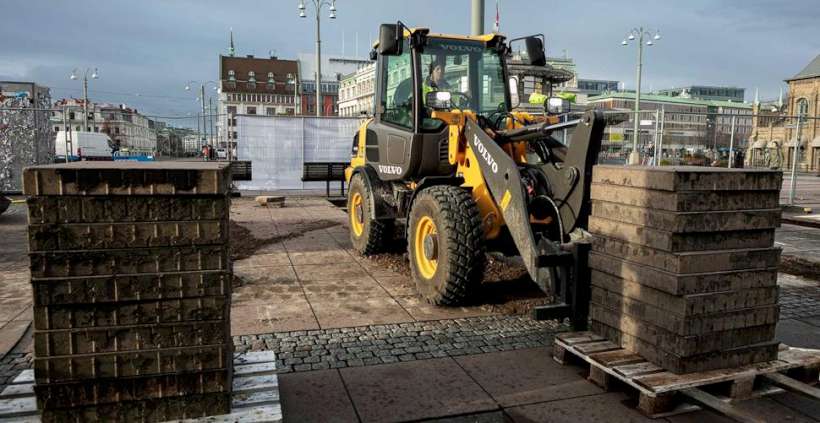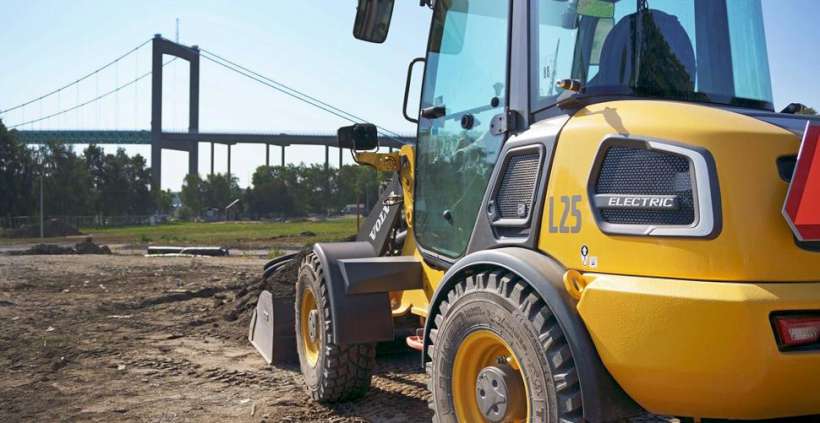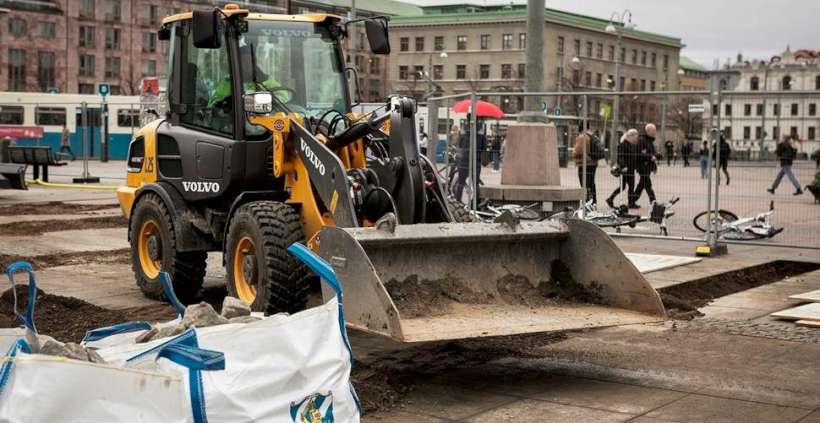Volvo CE have recognised that there is no point in running electrically powered construction machinery if the infrastructure is not in place to support it – or the working practices altered to suit the machinery.
The company is therefore carrying out a research project with partners to explore every aspect of the ‘electric ecosystem’ to help deliver a complete site solution for real urban applications.
E-Work Sites
Together with multiple municipalities, cities and academic and industry partners, Volvo CE is thoroughly testing every part of how an electric machine is put to work from a system perspective – from charging infrastructure through to energy supply and more.
The Electric Worksite (E-Worksite), which launched earlier this year in Gothenburg, Sweden, not only sets the global benchmark for electric jobsites but also tests electric machines’ specific requirements across different tasks within a demanding urban environment. It is a vital next step in the manufacturer’s electrification journey and a testament to its commitment to achieving net zero value chain greenhouse gas emissions by 2040, as validated by the Science Based Targets initiative.
Carolina Diez Ferrer, Head of Advanced Engineering Programs, at Volvo CE, says: “We are already delivering electric solutions that offer zero exhaust emissions, reduced noise, and a much more comfortable work environment, but that is only half the challenge. We are committed to also helping our customers reach their own climate goals through complete site solutions with a holistic sustainable approach. This exciting partnership allows for a comprehensive investigation into the varied infrastructure and support system needs for electric machines to really perform to their best, no matter the task at hand.”

Innovation powered by partnership
E-Worksite has now completed the development of a new recreation area within the major city park and is currently working on the redesign of the city square, both in the heart of Gothenburg, the second largest city in Sweden. Here, the customer transformation from diesel machines into more sustainable environmental solutions is guided by a fully holistic exploration of every aspect of site management.
The project is funded by the Swedish Energy Agency, with Volvo CE working in close collaboration with Gothenburg City, NCC, Gothenburg Energy, Lindholmen Science Park, Chalmers University of Technology and ABB Electrification Sweden, among many others to conduct a largescale machine demonstration in Gothenburg.

Off-the Shelf Electric Equipment
In this first phase, a number of electric machines already available to buy on the market are being put to the test, including the Volvo L25 Electric wheel loader and Volvo ECR25 Electric excavator, which are carrying out minor construction work, material moving and landscaping. A larger 30-tonne grid-connected excavator will be tasked with more energy-demanding jobs at different construction sites, to start in spring next year.
No one size fits all
Project planners are answering questions such as how to ensure best value for money for customers and what are the most energy efficient methods of supplying electricity to power the machines. Beyond the technology itself, business models, infrastructure and support systems, regulatory frameworks and a mindset change are all required on the road to full acceptance. It is a complex puzzle to solve as there will be no one size fits all. The findings will prove important not only for municipalities in deciding how to develop the appropriate legislation, but also for industry partners in bringing technical solutions to market – both in the immediate future and over the next two decades.

“We want to collectively take on the complex task of understanding the electric ecosystem and guide our customers on how best to move forward in this transition” says Niklas Lindblom, Project Manager at Advanced Engineering Programs, Volvo CE. “Through this partnership we will be connecting all parts of the customer value chain in order to build up shared knowledge and innovation capabilities to ensure our electric future is fit for any construction challenge.”
Launching the project in an urban application allows for a demonstration of the advantages electric machines bring to city life – low noise, low emissions and a much more peaceful environment for society in general.
